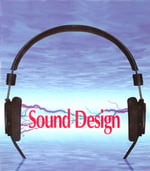 By David Sonnenschein, author Sound Design: The Expressive Power of Music, Voice and Sound Effects in Cinema. Tune into David's upcoming Webinar Series on April 3rd, co-hosted with our own Ric Viers. It's the latest in their "Secrets for Great Film Sound" series - visit Sound Design for Pros for registration details!
By David Sonnenschein, author Sound Design: The Expressive Power of Music, Voice and Sound Effects in Cinema. Tune into David's upcoming Webinar Series on April 3rd, co-hosted with our own Ric Viers. It's the latest in their "Secrets for Great Film Sound" series - visit Sound Design for Pros for registration details!
Key 5: Find the physical or dramatic transition in the scene
The flow of drama leads us to turning points in the story that evoke shifts in physical space, intent, emotion and in general a new direction for the characters and plot. When reading the script, note where these occur, as they will serve as signposts for changes in the soundtrack as well.
The most obvious shifts of physical space occur at the change of one scene location to another. Certainly this is motivation to change the ambient sounds to help orient the audience to the new space, but rarely is this change a dramatic turning point in itself. More likely you will have to dig for the psychological transition that can be escorted with a shift in the audio.
Still on the physical plane, a common transition element is a door. This can be leading the character into a new space, unknown adventure, or surprise twist. In thrillers the cliché of an attack upon the entering character continues to elicit anxiety, often accentuated with the low volume sound that suddenly is broken by the loud, contrasting thrust of the intruder. There are also moments of a sudden, unexpected entry into a room by a foreign element that is accompanied by a definite shift in the ambiance. Imagine a dog kennel late at night when a cat somehow sneaks in through a window crack, wakening the snuffling hounds into a barking fervor. So the window, drawer, cabinet, closet, chimney, drain, manhole, elevator, car trunk, cave, swimming pool surface, ocean wave and shadow can all serve as “doors” into other realities.
Ask yourself what the predominant feeling is, before and after this transition. What would the character be hearing because their attention would be more prone to one aspect of the environment than another? How would the audience participate more in the world of the character with respect to the shift of sounds? Some bipolar extremes could be:
- closed - open
- loud - soft
- dry - echo
- low pitch - high pitch
- near - far
- empty - full
- harmony - dissonance
- friendly - menacing
The choices made should be based on an analysis of the arcs and dramatic turning points of the characters and plot, consciously emphasizing, suggesting or even contradicting what is occurring in the subtext of the script.
 Looking beyond the physical cues, there usually are many moments that exhibit profound transitions indicated by either a character’s action or dialogue. One example in As Good as it Gets occurs in the restaurant scene when Jack Nicholson is courting Helen Hunt in his very ungainly fashion. As he is drawing towards a decisive revelation and shift in his character, the natural sounds of the restaurant (murmur of other clients, silverware, glasses, etc.) fade away, leaving a kind of magical vacuum for the two characters to sink in their emotional teeth and hearts. When the scene tension is resolved with a humorous shift, the sounds of the restaurant return to their previous levels. The magic moment has passed.
Looking beyond the physical cues, there usually are many moments that exhibit profound transitions indicated by either a character’s action or dialogue. One example in As Good as it Gets occurs in the restaurant scene when Jack Nicholson is courting Helen Hunt in his very ungainly fashion. As he is drawing towards a decisive revelation and shift in his character, the natural sounds of the restaurant (murmur of other clients, silverware, glasses, etc.) fade away, leaving a kind of magical vacuum for the two characters to sink in their emotional teeth and hearts. When the scene tension is resolved with a humorous shift, the sounds of the restaurant return to their previous levels. The magic moment has passed.











